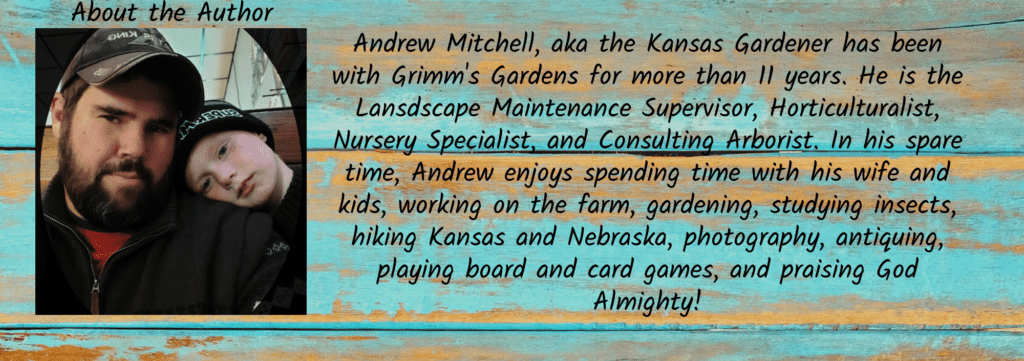As you spend your time planning for next year, look for underused plants. They come in all shapes and sizes, and many of them can be stars of the garden. I spend a lot of time with such plants, trying them in various places in my gardens. Some are ongoing trials, while others are stars in other parts of the country, or abroad. Many of our underused plants are stars in Europe or Asia, although they may be native (originally) to North America.
But where do we find underused plants? And where do they go in the garden? Can I fit them into my plan and will my designer understand why? All important questions, but most designers will work with you to implement favorite flowers, especially if they work in your area. And there are a ton of overused plants. These are used commonly by designers and gardeners because they work, and may be easy to find in the nursery. But that does not mean that underused plants do not work or are hard to find.
What are some of our most overused plants? Things commonly found in gardens across the Central Great Plains and Midwest include catmint (Cat’s Pajamas, Walker’s Low), daylilies (Stella D’Oro, Returns Series), Knockout Roses, Boxwoods, Karl Foerster Grass, Maiden Grass, Little Bluestem, Coneflower, Coreopsis ‘Zagreb’, Siberian Iris ‘Caesar’s Brother’, Hostas, Coral Bells, and more. There is nothing wrong with any of these plants; they are good at holding the landscape together. But there is a whole plant palette out there to be used.
Finding Underused Plants
Now, nurseries, Grimm’s Gardens included, can easily find common landscape plants (mentioned above), but we can also find many of the underused perennials and shrubs. Even some trees are underused, though they are becoming more utilized thanks to diseases like Emerald Ash Borer, Oak Wilt, and Thousand Cankers. Because many of our large shade trees are at risk from disease and insect problems, underused trees are becoming more popular.
Wholesale nurseries rely on a series of best-selling plants that work well in multiple parts of the country, as well as abroad. Therefore, they often do not have as many of the underused plants available, but they usually have some. If there is a particular plant you cannot find at your local garden center, try mail order nurseries, such as Grimm’s Gardens and others.
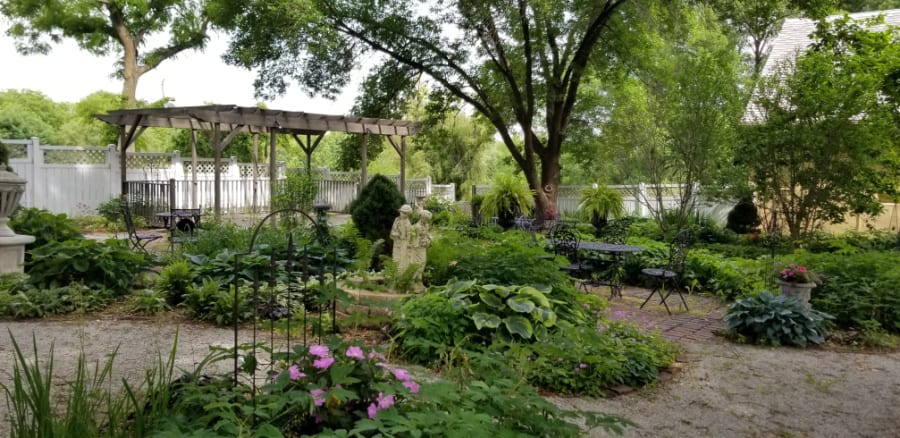
Underused Perennials For Sun
Surprisingly, there are quite a few plants that highlight the list of underused plants for sunny spots. While all these plants are great for our area, and you may find some of them in your friend’s gardens, they are not as popular as they should be. I have all of these perennials (plus the popular ones) in my gardens, but I am an exception, for I am a plant collector.
Nonnatives
- Cupid’s Dart (Catananche caerulea) – I grew this from seed in spring of 2022, and it did very well in my garden. It is a delicate looking flower, but sturdy.
- Maltese Cross (Silene chalcedonica) – one of my favorite small perennials, it comes in orange, red, or pink. And I have them all.
- Yarrow (Achillea species) – I think the drawback to yarrow is a short bloom time, but foliage makes up for that. Flower color can be white, pink, red, yellow, or lavender.
- Red Hot Poker (Kniphofia species) – another plant for hot and dry conditions, red hot poker leaves look like daylilies, but the blooms are not the same. Newer cultivars are on the market, but it is still underplanted.
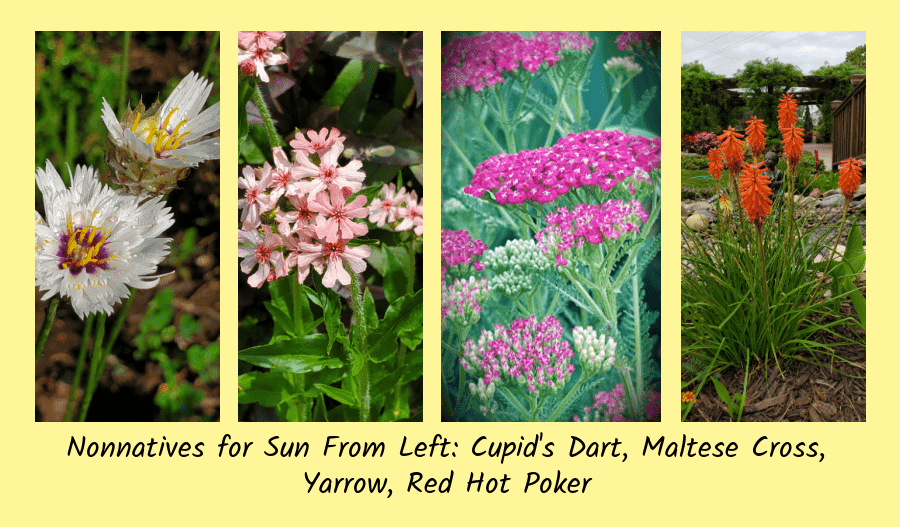
Natives
- Bluestar (Amsonia species) – while this native plant is becoming more popular thanks to Proven Winners cultivars, it should be used more. ‘Blue Ice’ is my favorite, and really shines in spring.
- Milkweeds (Asclepias species) – You would not think these would be underused, but they are. With a decline in Monarch populations, everyone should grow at least 1 species of milkweed.
- False Indigo (Baptisia species) – another one that is gaining popularity, but has a ways to go. Possible the most easy going perennial. Plant it, let it be, and knock down the stems in November or February. Another of my favorites, I have 10 cultivars.
- Calamint (Calamintha arkansana) – one of the longest blooming perennials. With flowers similar to catmint, but white, it is attractive to many pollinators. I love that it blooms for over 2 months, even in the worst heat and drought.
- Sneezeweed (Helenium species) – another native, sneezeweed has several available cultivars, but is hard to find in gardens. It is not long lived like some perennials, but the varied flower colors make up for that.
- Perennial Sunflower (Helianthus species) – one of the problems here is that most of these spread a lot. But I have been trialing dwarf selections of willowleaf sunflower, and I have been impressed by 2 cultivars so far. ‘First Light’ and ‘Autumn Gold’ are great.
- Mountain Mints (Pycnanthemum species) – if you love the smell and usage of mint, but not the aggressiveness, try mountain mints. I have 3 species, and have been impressed by all.
- Rose verbena (Glandularia canadensis) – perhaps one of the best and easiest to grow groundcovers for sun. And the rose pink flowers bloom from June to October in most situations.

For Shade
In the shade garden, you typically find hosta, coral bells, ferns, astilbe, and columbine. At least for perennials. One of my favorite customers has a lot of shade, and I have worked hard to find perennials and shrubs to add into her shade gardens. And while I still use the popular plants, I try to add new textures and colors with underused plants.
Nonnatives
- Bear’s Breeches (Acanthus mollis) – a spiky leaves plant with great texture, even when it refuses to bloom. And the blooms can be quite showy.
- Leopard Plant (Ligularia species) – an old world favorite, leopard plants have lost some favor in North America. They can still be found in older and Victorian style gardens, but are not usually found in the average landscape.
- Masterwort (Astrantia species) – a member of the Carrot Family, masterwort is one of the prettiest small flowers for shade.
- Pigsqueak (Bergenia purpurascens) – with shiny leaves and small pink flowers, it can be overlooked. But add it to the shade and you get some much needed fall color.
- Barrenwort (Epimedium species) – I call it dancing flower. The flowers, which hang upside-down like the favorite Lenten Rose, dance in any wind. And the leaves can be saw-edged, splashed with colors, or richly green.
- Toad Lily (Tricyrtis hirta) – one of the last flowers to bloom in fall, toad lilies light up the shade with their bright colors.
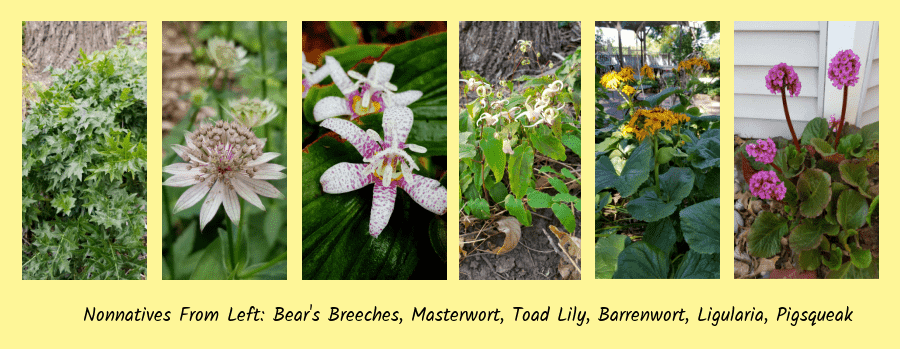
Natives
- Nodding Wild Onion (Allium cernuum) – while it actually grows on the edge of the shade in the Southeastern US, they work great in our shade gardens. Mine have done wonderfully since planting.
- Jack-in-the-Pulpit (Arisaema triphyllum) – one of the coolest looking natives, Jack grows in dense shade and can be difficult to get started.
- Wild Ginger (Asarum canadense) – I love wild ginger! It grows very well in rocky soil, as well as poor soil in my shade garden. It is slow, but makes a dense groundcover over time.
- Bloodroot (Sanguinaria canadensis) – another of my favorite spring flowers, the bright white leaves shine in the shade.
- Roundleaf Groundsel (Packera obovata) – if you need early food for bees, plant groundsel in the shade garden. The yellow flowers are daisy-like and attractive to pollinators.
- Woodland Blue Phlox (Phlox divaricata) – this is perhaps my favorite underused perennial. I have been able to find white and pink flowered mutations of this normally blue flowered groundcover.
- Elm-leaf Goldenrod (Solidago ulmifolia) – there is a goldenrod for every place. Including this one for shade, which is almost unknown outside of native plant groups.
- Indian Pink (Spigelia marilandica) – another almost unknown native groundcover for shade. The flowers are gorgeous red with yellow.
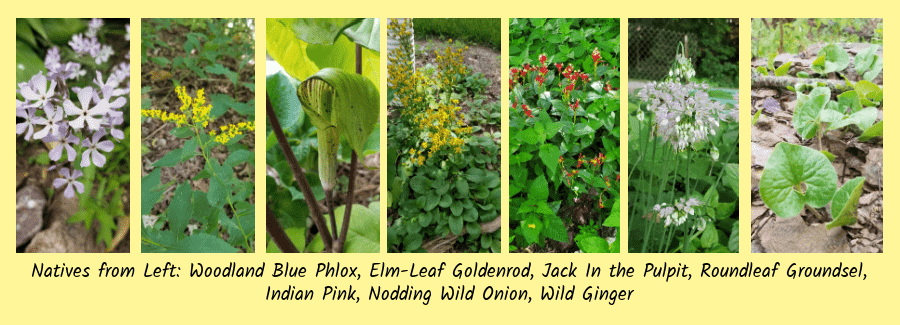
Conclusion
Finding and planting underused plants may not seem easy, but it is easier than you think. Being a plant collector has allowed me to find and discover a wide variety of plants, both popular and underused. I can usually point anyone in the right direction for a plant.
Happy planting!
